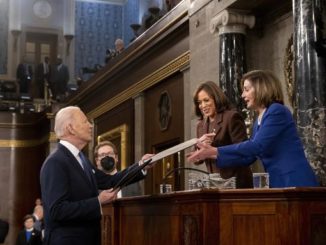
Guru Gobind Singh, born Gobind Rai (22 December 1666 – 7 October 1708), was the 10th Sikh Guru, a spiritual master, warrior, poet and philosopher.
When his father, Guru Teg Bahadur, was beheaded for refusing to convert to Islam, Guru Gobind Singh was formally installed as the leader of the Sikhs at age nine, becoming the last of the living Sikh Gurus.
Guru Gobind Singh was a man of great intellectual attainments. He was a linguist familiar with Persian, Arabic, and Sanskrit as well as his native Punjabi. He further codified Sikh law, wrote martial poetry and music, and was the reputed author of the Sikh work called the Dasam Granth.
Guru Gobind’s greatest achievement was his creation of the Khalsa in 1699. According to one tradition, one morning after services, he sat in meditation before a great number of Sikhs and asked if any would sacrifice himself for the faith. Finally one man stepped out. The Guru and his victim disappeared into a tent. A few minutes later Gobind Singh appeared with his sword dripping with blood, calling for another sacrificial volunteer. This ceremony continued until five men had volunteered. All five men then reappeared; according to one tradition the men had been slain but were miraculously restored to life, and according to another Gobind Singh had merely tested the men’s faith and slaughtered five goats instead. Initiated with amrit (sweetened water or nectar) and given the title pañc-piara (the five beloved), they formed the nucleus of the Khalsa. With the Khalsa as the guiding spirit of the reconstituted Sikh army, Gobind Singh moved against the Sikhs’ enemies on two fronts: one army against the Mughals and the other against the hill tribes. His troops were totally devoted and totally committed to Sikh ideals, willing to risk everything in the cause of Sikh religious and political freedom. He paid a heavy price for this freedom, however. In one battle near Ambala, he lost all four of his sons. Later the struggle claimed his wife, mother, and father. He himself was killed by a Pashtun tribesman in revenge for the death of his father.
Gobind Singh proclaimed that he was the last of the personal Gurus. From that point forward, the Sikh Guru was to be the holy book, the Adi Granth. Gobind Singh stands today in the minds of Sikhs as the ideal of chivalry, the Sikh soldier-saint.
His essential motto was ‘manas ki jaat sab ek hi pahnchanbo’ – all of humankind has one caste. The ‘panj piyares’ (five beloved ones) who were initiated by Guru Gobind Singh into the Khalsa and drank amrit (nectar) from one bowl belonged to different castes – one was a Brahmin, another was a Kshatriya and the other three belonged to the then so-called lower castes.This was a message of social equality – a highly symbolic ritual in which all castes became one again.
The Guru born in Patna symbolises buoyant hope (carhdi kala) and an indefatigable spirit to wage a war for Dharam (righteousness). He was a spiritual leader and a prolific poet who gave a clarion call to embrace battle when the times demanded ‘shaheedi’ (the word has not been used by the Guru himself). That is the timelessness of his leadership – that is true ‘prakash’ (light). In his own words penned with reference to his father’s execution in Bichitra Natak:
“Dharam het saka jin kiya,
Sirr diya par sirarr na diya.”
Loosely paraphrased: “He was martyred for upholding Truth and Righteousness. He gave his head, but not his determination.”
Guru Gobind Singh’s contributions to the spiritual and theological lives of Sikhs in specific and Indians in general cannot be praised enough. At an intensely personal level, Guru Gobind Singh’s relevance stems from his valour and from the legitimacy he vested once again to war, to bravery and to giving up one’s life to uphold one’s Dharma (it is important to distinguish Dharma from religion). Love for all of humankind and destruction of oppressors can co-exist and do co-exist. Pacifism is not to be confused with cowardice; militancy spurred by malice or greed is not war for Dharma and raising of arms in the battlefield for the establishment of the fundamental principles of the Divine and humankind is not militancy. In our times, like in all of times when human beings have existed, raising of arms is both real and symbolic and wars are not waged for power and territory alone – they are also waged for change. India has always been a pacifist nation ready for war, we are capable of expounding the deepest of spiritual truths and also fighting the toughest of battles. That is the message which the life and teachings of Guru Gobind Singh reiterates.
Gobind Rai, who would later be named as Guru Gobind Singh, was born to the ninth Guru of Sikhism, Guru Teg Bahadur and Mata Gujri at Patna Sahib or Takht Sri Patna Sahib (now in Patna).
He was only nine when he became the Tenth Sikh Guru. He ascended after his father Guru Teg Bahadur accepted martyrdom in the hands of Mughal Emperor Aurangzeb to protect the Kashmiri Hindus.
As a child, Guru Gobindh Singh learned many languages including Sanskrit, Urdu, Hindi, Braj, Gurmukhi and Persian. He also learned martial arts to become adept in combat.
Guru Gobindji’s hometown was the city of Anandpur Sahib in the present Rupnagar disrict in Punjab. He left the town due to a scuffle with Bhim Chand and proceeded to Nahan, a place in the hills of Himachal Pradesh, following an invitation of Mat Prakash, the king of Sirmur.
From Nahan, Guru Gobind Singh proceeded to Paonta, a town beside the river Yamuna in South Sirmur, Himachal Pradesh. There, he founded the Paonta Sahib Gurudwara and preached about the Sikh principles. Paonta Sahib remains an important pilgrim site for Sikhs. Guru Gobindji also wrote texts and had a substantial number of followers within three years, the time he spent there.
In September 1688, at the age of 19, Guru Gobind Singh fought the Battle of Bhangani against an allied force of Bhim Chand, Garwal king Fateh Khan and other local kings of the Sivalik Hills. The battle lasted for a day and thousands of lives were lost. The Guru came out victorious. A description of the battle can be found in Bichitra Natak or Bachittar Natak, a part of the Dasham Granth, which is a religious text attributed to Guru Gobind Singh.
In November 1688, Guru Gobind returned to Anandpur, which became known as Chak Nanaki, agreeing upon an invitation from the dowager queen of Bilaspur.
After repeated conflicts with Garwali and Mughal leaders, Guru Gobind Singh wrote a letter to Aurangzeb in Persian, which was later famously named as Zafarnama or the Epistle of Victory, reminding him of the misdeed the Mughals had done to the Sikhs. He fought against the Mughals later in battle of Muktsar in 1705.
After Aurangzeb’s death, Guru Gobind Singh no longer remained an adversary to the Mughals. The next Mughal emperor, Bahadur Shah was friendly with Guru Gobind at first. He even named the Guru as Hind Ka Pir or the Saint of India. But later on, Bahadur Shah was influenced by Wazir Khan, Nawab of Sirhind, to attack the Sikh community. Wazir Khan sent two Pathan assassins Jamshed Khan and Wasil Beg to attack the Guru during his sleep at Nanded, the Guru’s resting place. They stabbed Guru Gobind Singh in his sleep. The Guru killed Jamshed, the attacker, with his sword, while other Sikh brothers killed Beg. Guru Gobind Singh named Guru Granth Sahib, the religious text of the Khalsas and the Sikhs, as the next Guru of the two communities. He left his bodily form and on October 7 in 1708.





Be the first to comment